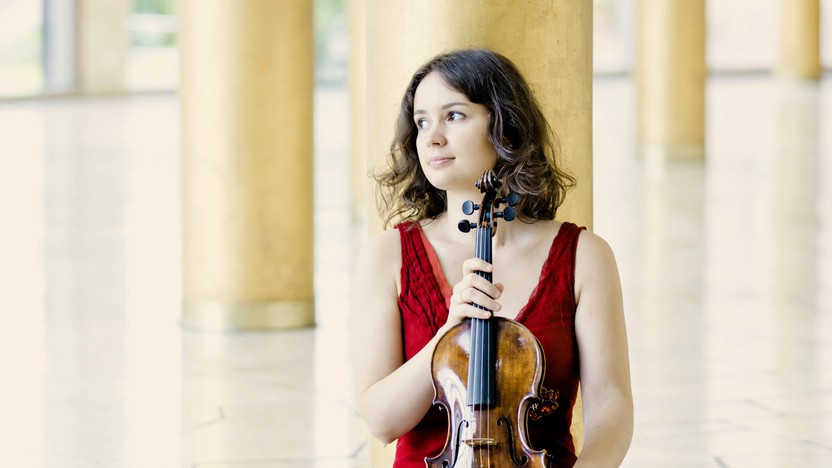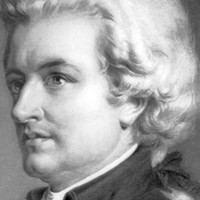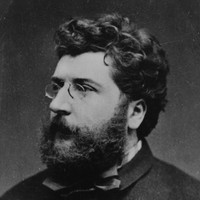Opening Night: Patricia Kopatchinskaja Plays Prokofiev



Wolfgang Amadeus Mozart’s long and lucrative run touring Europe as a child prodigy came to a close in 1771, when the 15-year-old was getting a bit too old to pull off the boy wonder routine that his father had helped him perfect. Stuck back in the sleepy church town of Salzburg, where he worked alongside his father in the court of an officious archbishop, Mozart did all he could to find his own musical outlets, including many gigs entertaining Salzburg’s upper crust with symphonies, concertos, serenades and other pleasant diversions. He actually wrote about half of his lifetime output of symphonies during those journeyman years, including one of his first works of utter genius: the Symphony No. 25 in G Minor, written at 17.
During Mozart’s adolescence, the symphony itself was still in a state of infancy. Growing out of the Italian overture or sinfonia, traditionally in three sections patterned fast-slow-fast, the symphony assumed its familiar dimensions with the insertion of a third-movement minuet, a style borrowed from French dance suites. The composer most closely associated with the development of the symphony was Franz Joseph Haydn, and by the early 1770s he was past his fiftieth symphony. Mozart didn’t have the benefit of direct contact with Haydn until later in Vienna, but he did enjoy close proximity to Joseph’s younger brother Michael Haydn, the Salzburg Konzertmeister and a fine composer of symphonies himself.
Between 1768 and 1774, Joseph Haydn wrote a number of symphonies that reflected the highly emotive Sturm und Drang (“Storm and Stress”) aesthetic that was also sweeping through literature, theater and art at the time. Mozart entered similar emotional territory in Symphony No. 25, the first of only two minor-key symphonies in his output. (This one is sometimes called the “Little G-minor” to differentiate it from Symphony No. 40 in the same key.)
The first twelve measures of the opening Allegro con brio are as terrifying as anything in Mozart’s output. There are moments of relief in the symphony — the contrasting major-key theme in the first movement, the docile Andante movement, and the wind ensemble music in the minuet’s trio section, for example — but overall, the work is uncompromising, holding its tense edge through to the end of the Allegro finale.
Aaron Grad ©2022
 Listen to Audio
Listen to Audio
“The opening of the second movement is one of the greatest melodies ever written for violin. In the wrong hands, it can become overly sentimental, something which Prokofiev warned violinists to avoid. The combination of vulnerability and tenderness that comes across in Patricia’s recording of the piece was one of the first things that drew me into her artistry.” – Kyu-Young Kim, SPCO Artistic Director and Principal Violin
After the October Revolution in 1917, Prokofiev followed the lead of many Russian artists who emigrated to the West—except that he traveled east, reaching New York by way of Siberia, Tokyo and San Francisco. His dim American prospects eventually led him to continue on to Paris, but once there he butted up against Stravinsky and the young French cohort known as “Les Six,” who set the tone for the Parisian avant-garde with their cool detachment and spiky irreverence.
Prokofiev went through his own enfant terrible phase, but he matured into an increasingly direct and heartfelt manner of composing that he described as “new simplicity,” a style that pushed him ever further into the margins of European art music. Ultimately he found a receptive audience back where he started, in the Soviet Union: He returned for his first concert tour in 1927, and he settled there permanently in 1936, making him the only major Russian artist to repatriate after the Revolution.
The Violin Concerto No. 2, from 1935, turned out to be Prokofiev’s final commission outside of the Soviet Union. Supporters of the French violinist Robert Soetans funded the work, which Prokofiev composed in Paris and during travels through the Soviet Union.
A “NEW SIMPLICITY”
The concerto fulfills the promise of a “new simplicity” from its opening measures, entrusting an unadorned theme to the solo violin. That melody haunts the Allegro moderato movement, ultimately silencing a contrasting lyrical strain and returning for a charged final statement with bellicose plucks.
The slow movement takes up the same ascending triad pattern that began the first movement, transporting it to a peaceful accompanying texture for clarinets and pizzicato strings. The solo violin floats above with a melody of timeless beauty and grace, soaring into the instrument’s highest range as the melody passes to the orchestra. A central Allegretto section provides an energized contrast, making the sweet tune’s return all the more affecting.
With its lumbering dance theme and Spanish-tinged castanets, the finale confirms that Prokofiev’s move toward simplification did not excise his wry wit. The music builds to a propulsive coda, the violin’s perpetual motion figures urged forward by a thudding bass drum and throbbing accompaniment.
Aaron Grad ©2016

Georges Bizet was a star student at the Paris Conservatory, writing this self-assured Symphony in C Major at 17 and winning the prestigious Rome Prize at 19. He spent his short adult life mostly occupied with operas, planning as many as 30 but leaving only six intact. Bizet endured a string of setbacks, false starts and poor reviews; even Carmen was panned in Paris and caught on only after a successful Viennese production. He died at the age of 36, never witnessing the triumph of his signature opera.
Like any good student, Bizet took inspiration from his forebears, incorporating aspects of Wolfgang Amadeus Mozart, Ludwig van Beethoven, Franz Schubert, Felix Mendelssohn and, above all, his teacher Charles Gounod, to whom he later wrote, “You were the beginning of my life as an artist. I spring from you.” Bizet made no effort to arrange for the symphony’s performance or publication in his lifetime, and the neglected manuscript passed from his widow to another composer and finally back to the Conservatory. It was only rediscovered and performed in 1935, but within a year it spread to over a dozen cities on three continents, and by century’s end it had been recorded nearly 50 times, allowing this symphony to earn its rightful reputation as one of the strongest compositions ever created at so young an age.
The opening movement’s Classical balance and breathless exhilaration recall Mozart, another symphonic prodigy who was always an opera composer at heart. The plaintive, song-like slow movement reaches into an even more distant past when it incorporates stately dotted rhythms and fugal counterpoint in a Baroque style, while the scurrying finale updates the whimsical frenzy of Mendelssohn.
Aaron Grad ©2022
Get driving directions and find nearby parking.
Find dining options close to the venue.
View seating charts to find out where you'll be seating.
SPCO concerts are made possible by audience contributions.
For exclusive discounts, behind-the-scenes info, and more:
Sign up for our email club!
